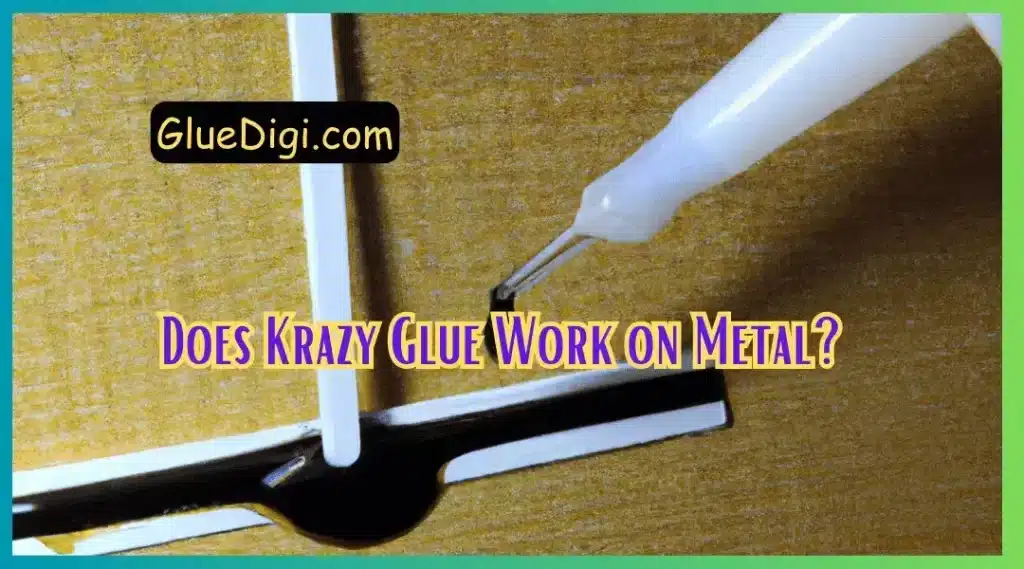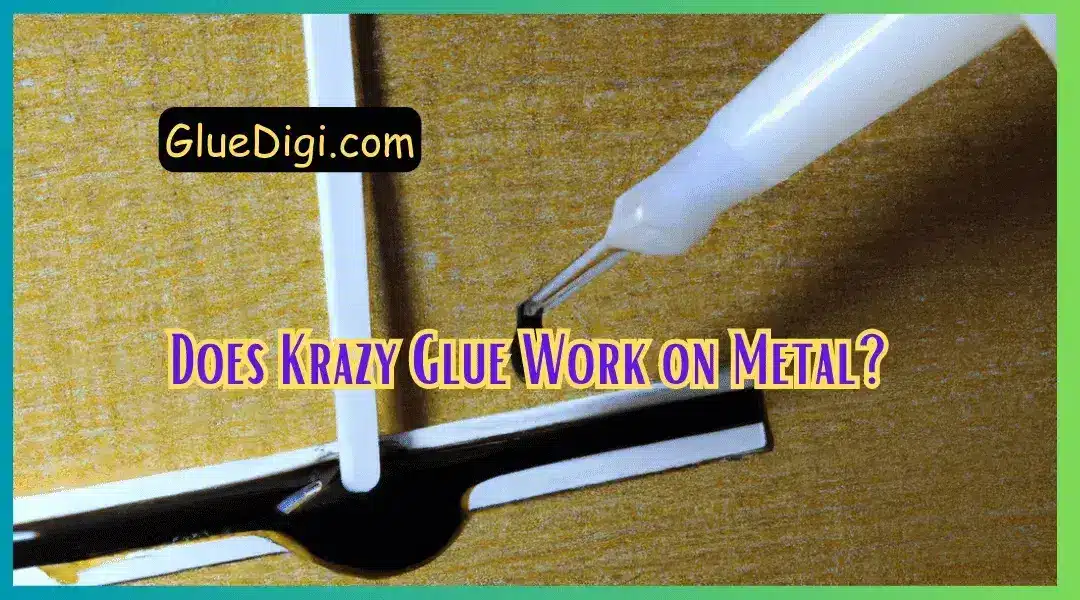Krazy Glue is a brand name for cyanoacrylate adhesive that has been widely used for bonding different materials, including metals. However, the question remains whether Krazy Glue works effectively on metal or not. In this comprehensive guide, we will explore Does Krazy Glue Work on Metal? and provide expert insights on the topic.
The characteristics of Krazy Glue and metals must be understood before getting into the specifics. Krazy Glue is a quick-drying glue that reacts chemically with the surface it is applied to create a solid bind. On the other hand, metals’ unique characteristics, such as hardness, surface roughness, and chemical composition, have an impact on the bonding procedure.
Let’s dive into this peculiar topic and uncover the taste, health risks, and even unique uses of glue beyond its intended purpose.
Therefore, to determine the effectiveness of Krazy Glue on metals, we need to consider the type of metal, the surface preparation method, and the application process.
Types of Metals
The type of metal is a critical factor that determines whether Krazy Glue will work effectively or not. Metals can be classified into two categories: ferrous and non-ferrous. Ferrous metals contain iron, while non-ferrous metals do not contain iron.
Ferrous metals, such as steel and iron, are susceptible to rust and corrosion, which can weaken the bond with Krazy Glue. Therefore, it is essential to remove any rust or corrosion from the metal surface before applying Krazy Glue. Non-ferrous metals, such as aluminum and copper, are less susceptible to corrosion and can form a strong bond with Krazy Glue.
In general, Krazy Glue works well on non-ferrous metals, while the effectiveness of ferrous metals depends on the surface preparation method.
Surface Preparation
The surface preparation method is crucial for the effectiveness of Krazy Glue on metal. The metal surface should be clean, dry, and free of any oil, grease, or rust. Any dirt or contaminants on the surface can weaken the bond between Krazy Glue and the metal.

The surface can be cleaned using a degreaser or a solvent, followed by wiping it with a clean cloth. For removing rust or corrosion from ferrous metals, sanding or wire brushing can be used. After cleaning, the surface should be allowed to dry completely before applying Krazy Glue.
To expand the bonding area and improve Krazy Glue’s adherence, it is also crucial to gently roughen the metal’s surface with sandpaper or a file.
Are Glue Sticks Toxic – See What Experts Say
Application Process
Similar to other materials, Krazy Glue may be applied to metal. Applying a little amount of adhesive to one surface and pressing it firmly onto the other should be done.
The surfaces should be held together for a few seconds to allow the glue to dry and bond.
It is essential to apply the glue in a well-ventilated area and avoid inhaling the fumes. Direct contact with the skin should also be avoided as the glue can bond skin together.
For larger surface areas, it is recommended to apply the glue in sections to ensure complete coverage and avoid gaps or bubbles.
Factors Affecting the Bond Strength
Surface roughness, temperature, and humidity are just a few of the variables that affect how well Krazy Glue bonds to the metal. In comparison to a smooth surface, a rougher surface offers a larger bonding area and higher adherence. In addition, higher temperatures and lower humidity levels boost the binding strength.
However, as was previously indicated, the type of metal might have an impact on the bond strength. Due to rust or corrosion, ferrous metals may suffer a lesser relationship, but non-ferrous metals might establish a strong bond.
The binding strength is also impacted by the adhesive layer’s thickness. A weaker bond may result from a thicker coating of glue that takes longer to dry.
Advantages of Krazy Glue on Metal
Krazy Glue offers several advantages when bonding metal surfaces. It forms a strong and durable bond that can withstand high stress and temperature. It is also resistant to water, chemicals, and most solvents. Krazy Glue dries quickly, allowing for fast repairs and bonding.
Moreover, Krazy Glue is easy to use and does not require any special tools or equipment. It can be applied with a brush, dropper, or tube, making it suitable for different applications.
Limitations of Krazy Glue on Metal
Despite its advantages, Krazy Glue has some limitations when bonding metal surfaces. As mentioned earlier, it may not work effectively on ferrous metals that have rust or corrosion. The bond strength may also weaken over time due to exposure to the environment, such as UV radiation, moisture, and temperature fluctuations.
What Does Elmer’s Glue Work On – An Ultimate Guide By Experts
Moreover, Krazy Glue may not be suitable for bonding large surface areas or heavy loads. It is not recommended for structural bonding or load-bearing applications.
Tips for Using Krazy Glue on Metal
To ensure the best results when using Krazy Glue on metal, follow these tips:
- Clean the metal surface thoroughly before applying Krazy Glue.
- Roughen the surface slightly using sandpaper or a file.
- Apply the glue sparingly to one surface and press firmly against the other surface.
- Hold the surfaces together for a few seconds to allow the glue to dry and bond.
- Avoid applying too much glue, as it can weaken the bond strength.
- Store the glue in a cool, dry place away from direct sunlight.
Conclusion
Krazy Glue can work effectively on metal surfaces, provided the right surface preparation method and application process are followed. Non-ferrous metals can form a strong bond, while ferrous metals may require rust or corrosion removal before bonding. Krazy Glue offers several advantages, such as fast drying, durability, and resistance to water and most solvents, but it also has some limitations, such as weaker bond strength over time and unsuitability for heavy loads or structural bonding.
